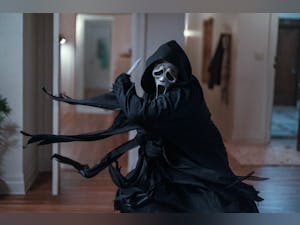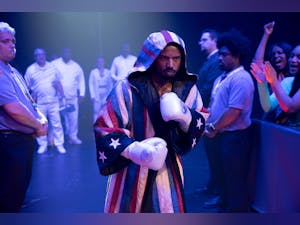From: Silver Screen
Rory Kennedy and the zone of discomfort
After filmmaker Rory Kennedy screened her new documentary, “Take Every Wave” about the life of big wave surfer Laird Hamilton, in New York recently, a man approached her and said he’d finally go into the ocean, even though he was terrified of the water and had never been in it before. “So, for him, that’s his wave,” Kennedy said.
The documentary shows Hamilton challenging himself to ride bigger waves and take intense risks, constantly pushing himself to overcome fear. His ardor for living life on the edge is so great that someone in the film thought Hamilton had a “fear defect.”
“One of the things I appreciate about [Hamilton] and his story is the idea of pushing yourself into a zone of discomfort. And for a lot of people, that is determined by fear,” Kennedy said in an interview with The Eagle at a press event in Washington, D.C.
She went on to say that, by showing Hamilton riding these “ginormous” waves, the audience could connect to that fear and then see him “get to the other side” of it, potentially learning something by watching him overcome his fear.
Kennedy once had a yoga teacher who said, when someone wasn’t flexible enough to touch his toes, “you’re blessed with stiffness.” She took that to mean the inflexible person was lucky because they had a shorter distance to reach before they hit their point of discomfort.
“Whatever it is, I think if we can all push through that [fear] a bit more, there’s a learning opportunity in that space,” Kennedy said.
However, fear exists in human beings for a reason. It warns us of danger and cautions us about our limits.
“I think that there are kind of natural mechanisms in our body that react to things, and then there’s our more conscious self that can take control of that,” Kennedy said. “The chatter in your brain isn’t who you are.”
The documentary features awe-inducing images of colossal waves, most of which were shot from a helicopter. Kennedy herself was in the helicopter for some of those shots and said she had to push into her own zone of discomfort to get up there.
“I used a lot of tools in my toolbox to work through a lot of issues,” she said, laughing.
But she decided shooting from a helicopter was the way to go, after watching hours of archival surf footage. And the best helicopter shots were below the wave, looking up so as to appreciate the enormity of it.
“If you have a helicopter that’s close to the water that can move with the surfer and still be low, you can get a really amazing shot,” Kennedy said. “But of course, then you have to be below the wave… in a helicopter.”
As Kennedy prepared to leave the hotel, she added that she hopes people will go see this movie in the theater. Not only is it a film that people of all ages can appreciate, but “to see an 80-foot wave on an 80-foot screen is different than seeing it on a small screen,” Kennedy said. “And that’s why we made it, with the intention of having that experience for people.”




